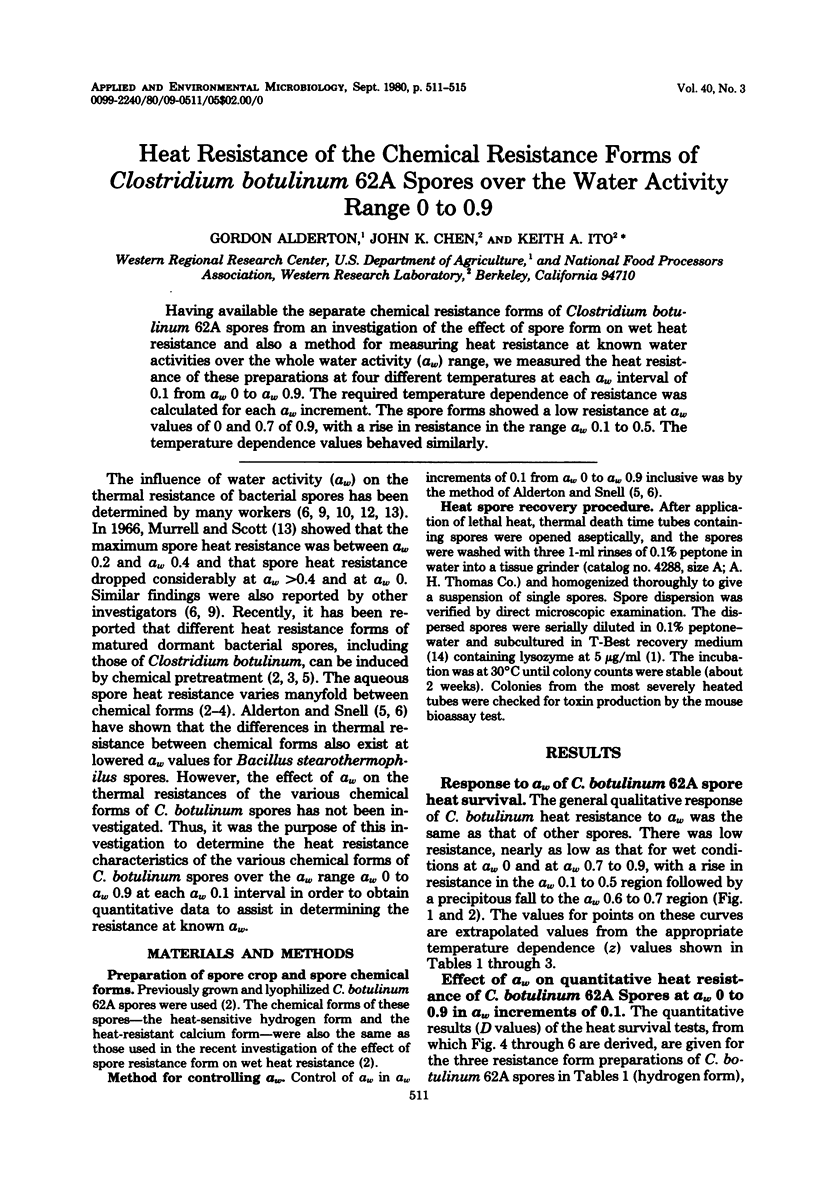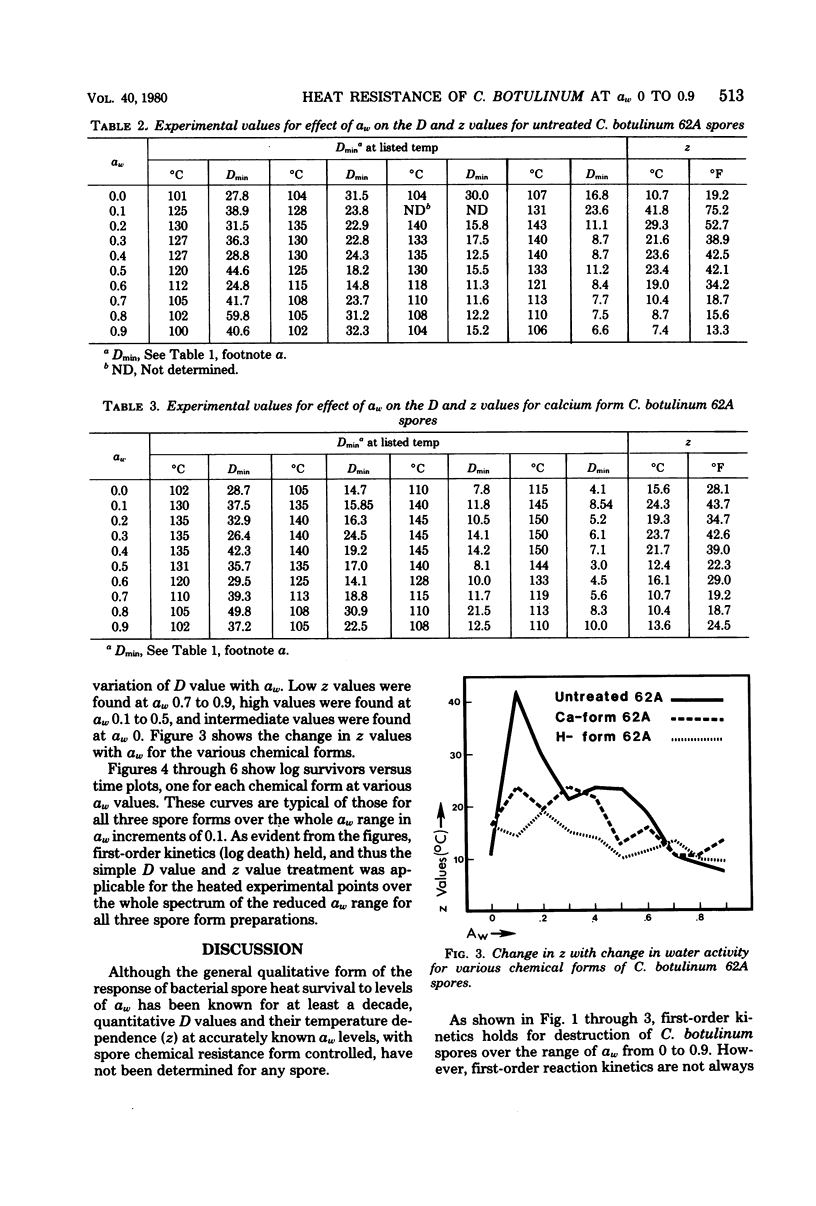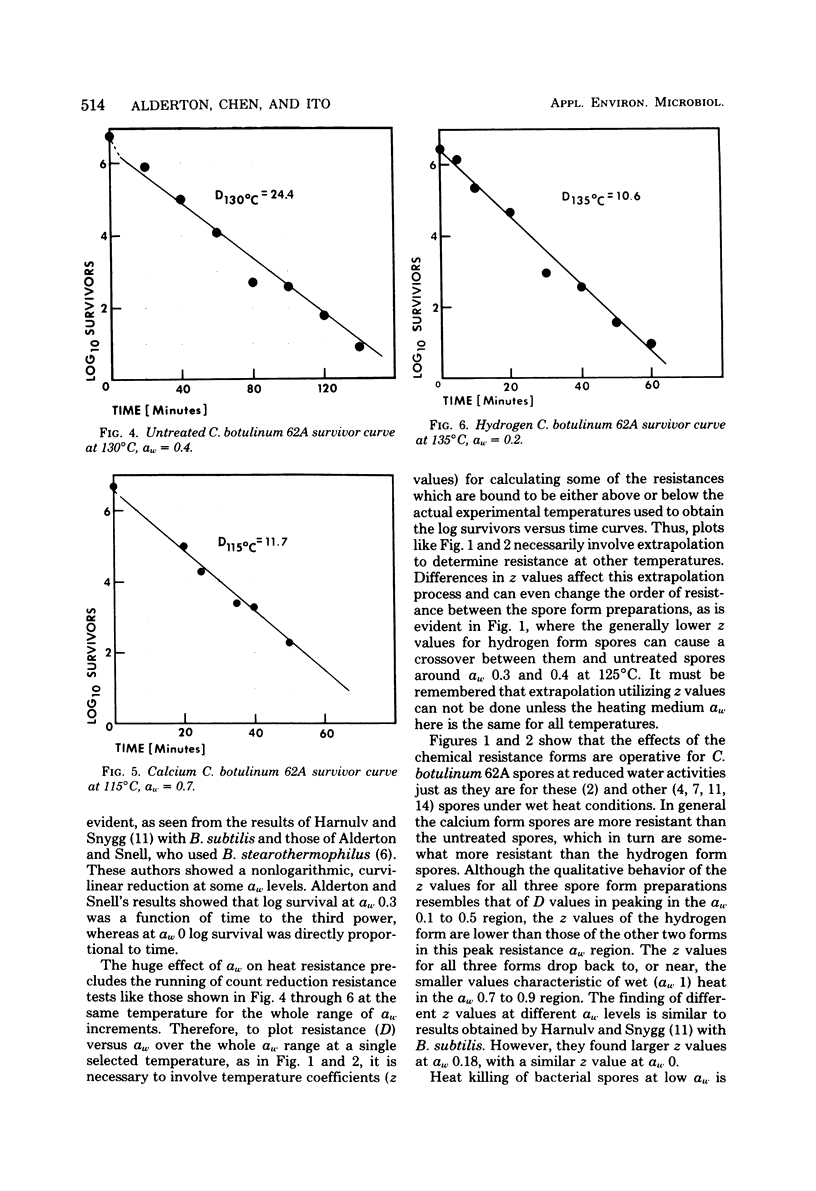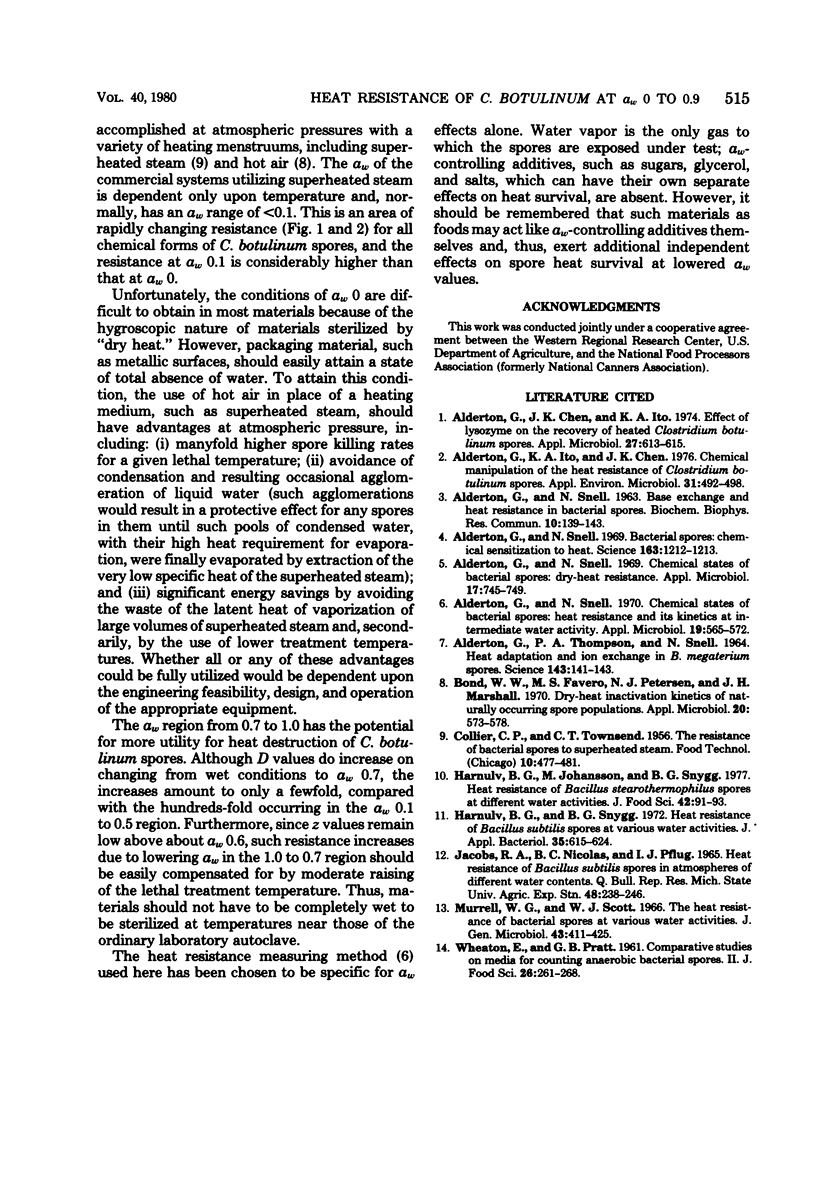Abstract
Having available the separate chemical resistance forms of Clostridium botulinum 62A spores from an investigation of the effect of spore form on wet heat resistance and also a method for measuring heat resistance at known water activities over the whole water activity (aw) range, we measured the heat resistance of these preparations at four different temperatures at each aw interval of 0.1 from aw 0 to aw 0.9. The required temperature dependence of resistance was calculated for each aw increment. The spore forms showed a low resistance at aw values of 0 and 0.7 of 0.9, with a rise in resistance in the range aw 0.1 to 0.5. The temperature dependence values behaved similarly.
Full text
PDF




Selected References
These references are in PubMed. This may not be the complete list of references from this article.
- ALDERTON G., THOMPSON P. A., SNELL N. HEAT ADAPTATION AND ION EXCHANGE IN BACILLUS MEGATERIUM SPORES. Science. 1964 Jan 10;143(3602):141–143. doi: 10.1126/science.143.3602.141. [DOI] [PubMed] [Google Scholar]
- Alderton G., Chen J. K., Ito K. A. Effect of lysozyne on the recovery of heated Clostridium botulinum spores. Appl Microbiol. 1974 Mar;27(3):613–615. doi: 10.1128/am.27.3.613-615.1974. [DOI] [PMC free article] [PubMed] [Google Scholar]
- Alderton G., Ito K. A., Chen J. K. Chemical manipulation of the heat resistance of Clostridium botulinum spores. Appl Environ Microbiol. 1976 Apr;31(4):492–498. doi: 10.1128/aem.31.4.492-498.1976. [DOI] [PMC free article] [PubMed] [Google Scholar]
- Alderton G., Snell N. Bacterial spores: chemical sensitization to heat. Science. 1969 Mar 14;163(3872):1212–1213. doi: 10.1126/science.163.3872.1212. [DOI] [PubMed] [Google Scholar]
- Alderton G., Snell N. Chemical states of bacterial spores: dry-heat resistance. Appl Microbiol. 1969 May;17(5):745–749. doi: 10.1128/am.17.5.745-749.1969. [DOI] [PMC free article] [PubMed] [Google Scholar]
- Alderton G., Snell N. Chemical states of bacterial spores: heat resistance and its kinetics at intermediate water activity. Appl Microbiol. 1970 Apr;19(4):565–572. doi: 10.1128/am.19.4.565-572.1970. [DOI] [PMC free article] [PubMed] [Google Scholar]
- Bond W. W., Favero M. S., Petersen N. J., Marshall J. H. Dry-heat inactivation kinetics of naturally occurring spore populations. Appl Microbiol. 1970 Oct;20(4):573–578. doi: 10.1128/am.20.4.573-578.1970. [DOI] [PMC free article] [PubMed] [Google Scholar]
- Härnulv B. G., Snygg B. G. Heat resistance of Bacillus subtilis spores at various water activities. J Appl Bacteriol. 1972 Dec;35(4):615–624. doi: 10.1111/j.1365-2672.1972.tb03743.x. [DOI] [PubMed] [Google Scholar]
- Murrell W. G., Scott W. J. The heat resistance of bacterial spores at various water activities. J Gen Microbiol. 1966 Jun;43(3):411–425. doi: 10.1099/00221287-43-3-411. [DOI] [PubMed] [Google Scholar]


